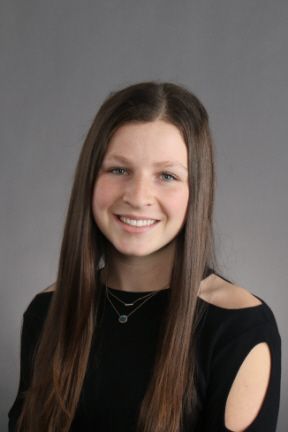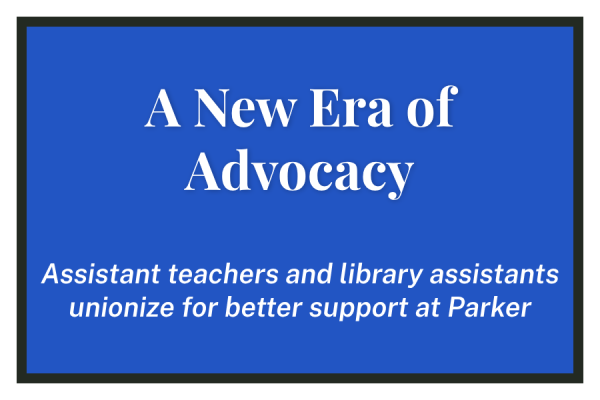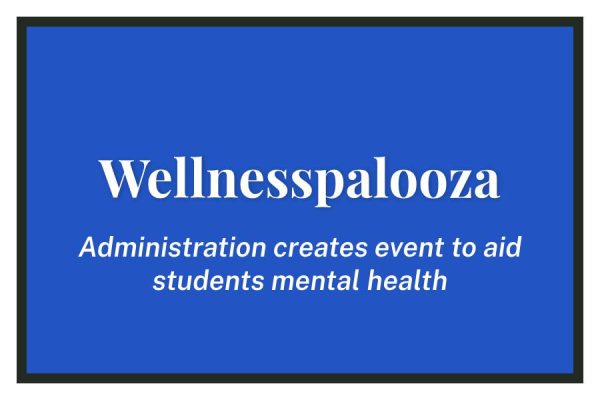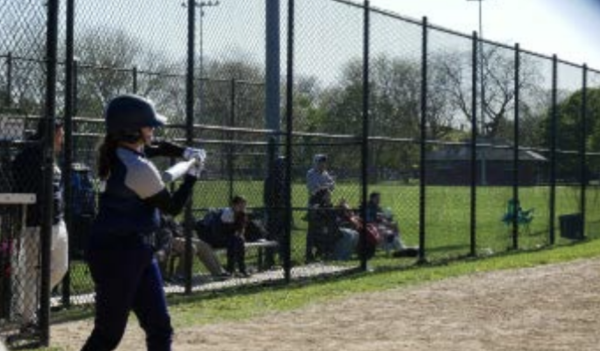A New Mentorship Program
Upper School Bridge Program Tweaked
At the tail end of summer and the start of the new school year, Parker holds its annual Upper School “Bridge” program––a program designed to help integrate new students to Parker’s Upper School academically, socially, and emotionally.
“The purpose is for the new students to Parker to really get to know each other and form a sort of cohort, so when they come in the first day, they are not alone and they don’t feel isolated,” Upper School Guidance Counselor Gary Childrey said. While the program takes place annually, this year there were two significant changes.
For many years the Student Government Community Committee has been a part of Bridge. Previously, members of the Community Committee were to hold check-ins throughout the year and keep up with the integration process of the 9th graders post Bridge. In addition to the committee members, there were also “mentors,” students whose only commitment was during Bridge itself. Now, the mentors and Community Committee members are interchangable. The mentors attend Bridge and assist the faculty with some of the planning elements. Rising senior and Community Committee head Ava Stepan feels that the student perspective is important in the planning to ensure that the students are engaged. “What interests a teacher is definitely not the same thing that’s going to interest a kid,” Stepan said.
Stepan believes that this new method of mentorship is an improvement from years past. “This is a more fool-proof way to select mentors, because in the past some people will not be as committed because they know it’s just a two week thing, and it’s not a huge commitment for them,” Stepan said. “Mentors in Community Committee are already committed to helping 9th graders in their process of transitioning from a completely different Middle School in most cases to Parker, and what that is going to look like.”
Junior Olivia Hanley, Community Committee member and mentor, thinks that the new mentor system is a positive change. “Since we all both serve as mentors and are on the Community Committee, I think it’s going to help us as representatives make the committee even better since we’ve been able to see how the new students have adjusted since their very first days at Parker,” Hanley said.
Junior Dani Lieb, another Community Committee member and mentor, agrees. According to Lieb, there are seven mentors, and during the year the Community Committee plans on having check-ins to follow up with new freshmen. “Having us also be at Bridge hopefully can make them more comfortable talking to us and sharing any problems or concerns,” Lieb said.
However, with the new system, it limits the number of mentors. “When there’s 10 or 12, then there’s a lot more opportunities, a lot more faces,” Childrey said.
Additionally, this year the groups that attended Bridge and the dates differed from years past. From August 12-14 and from August 22-23, it was held for “New to Parker” Upper School students, and from August 15-16, it was held for all freshmen. “There was information that the Bridge kids were getting that the kids who had been at Parker their entire lives hadn’t even known,” Stepan said. “There were a few things where they wanted everyone to be on the same page.” As head of Community Committee, Stepan was involved in the planning of the Bridge program, alongside other faculty members, including Childrey. Childrey noted that in some cases “New to Parker” students and rising freshmen may feel divided. “We are trying to combat that feeling that they might isolate themselves,” Childrey said.
In previous years, the days of Bridge were experimented with. During the 2017-2018 school year, the bridge program ran for two full days, from 9 a.m. to 3 p.m. and only with “New to Parker” students. During the 2018-2019 school year, it ran for 10 half days, from noon to 3 p.m. each day, and the returning freshmen participated in the final two days of the program. “The trick is to extend it longer, but make the actual days shorter,” Stepan said. “It also helps in their brains to organize it by day… Having people be able to make those distinctions in their brains helps them to remember it better, where if you just throw everything in randomly, that’s not going to be very helpful at all.”
The days of Bridge this year were from 12 p.m. to 3 p.m., and for each day, a different topic was the main focus. For the “New to Parker” students, the first day’s focus was places around the school, taught through activities such as tours and scavenger hunts. Day two was focused on traditions, Parker lingo and meeting new faculty. The third day focused on what specific classes will look like. The days of Bridge including the returning ninth graders included various “stations”––covering everything from schedules to clubs and committees. The final two days of Bridge will act as a wrap-up to the program.
Stepan entered Parker as a new freshman and said her experience in Bridge affected her experience planning this year, specifically in regards to “icebreaker” activities. “A ton of thought was put into what games they were doing because some personalities have the potential to overrun others or people will be totally shied away from it, so we wanted to do things that allowed people to get to know each other,” Stepan said. “The biggest thing I want them to get out of bridge is a sense of unity going into the Freshman Retreat and just going into Parker in general…No matter what that experience is like, they will remember these games that at the time they thought were funny, but it kind of gives them a talking point and a way to develop relationships further.”
“We’ve been doing bridge for about 17 or 18 years now and I think it has reduced the discomfort that many new students face not just coming to Parker but coming to high school,” Childrey said.







